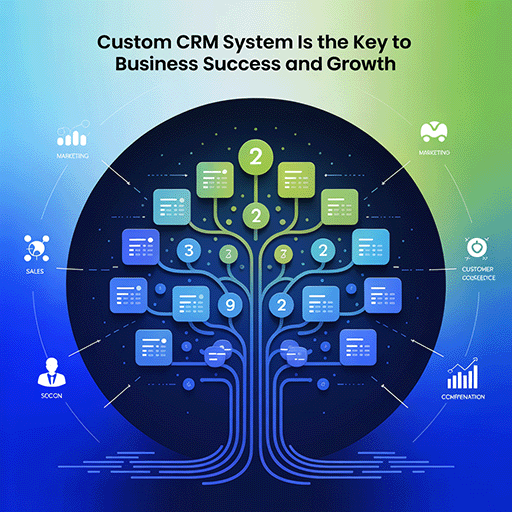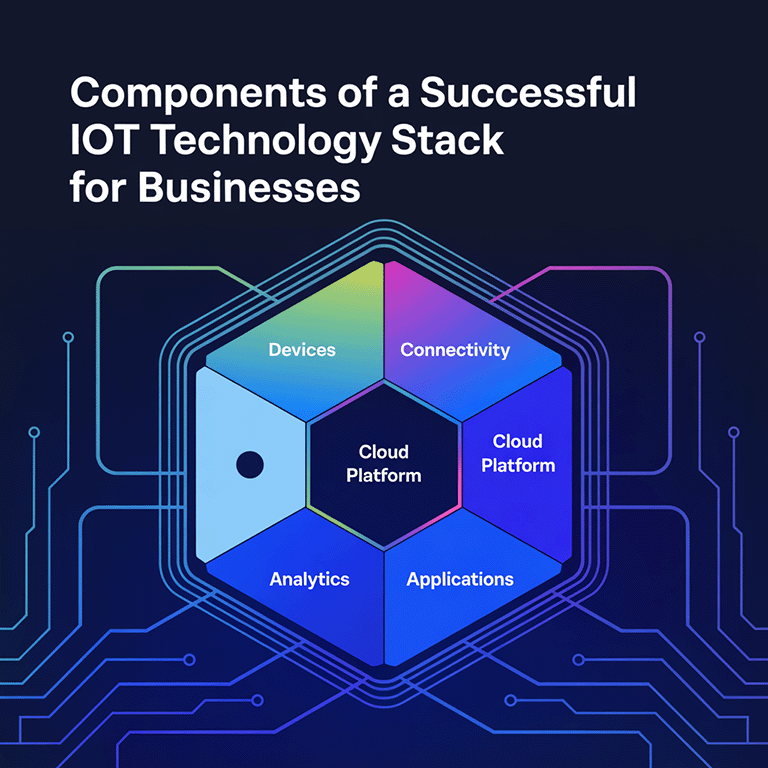In a world where startups spring up left and right, and everybody from any background can launch their own business and become successful, it feels foolish not to try launching your startup.
On the one hand, the market may seem saturated with startups, and there is no room for you. In 2022, there were 150 million startups, with 50 million new startups launching every year. This makes it incredibly challenging to stand out and succeed among such an enormous pool.
You may think it’s even harder to be noticed among the already successful companies, let alone the mediocre ones. But don’t worry—if you come up with an idea of a truly beneficial service or software, there is a good chance you’ll find your place. The key is having an idea that fills a real gap in the market.
If you have a great idea for your future startup, don’t waste time; act upon it. You have plenty of opportunities to become a top-tier company and be listed in the ranks of industry behemoths.
Of course, even with an amazing idea, there’s a chance of failure, especially if you’re not sure how to execute it in a way that resonates with customers and, ideally, investors. We know these challenges well. That’s why we created this guide on how to launch a startup for aspiring entrepreneurs who have not yet stepped into the demanding business world.
Does It Make Sense to Create Your Startup in 2025?
In the post-modern era, people started to believe that everything that could be created has been, and building something truly new is impossible. But that’s not the case.
We can take the ideas of the previous generations and transform them into something groundbreaking. For instance, how do you think artificial intelligence was created? Initially, it was the product of someone’s imagination, first mentioned in books as pure fantasy. Everyone thought it was not possible to bring such an idea to life.
Of course, we haven’t yet created the kind of artificial intelligence that can take the world and enslave humanity, as was described in the fiction books. But we’ve taken the concept of AI and developed neural networks that mimic the human brain.
Why are we mentioning that? You can take a similar approach to develop an idea for your startup. Or, if you already have an idea and feel it’s too common and worry that many companies have already launched similar products—don’t fret! Let’s say you want to create a habit-tracking app. You’d be right if you said there are plenty of similar apps in the Apple Store. So here’s what you can do.

First, analyze the market thoroughly and study every similar app. Look closely at the features, intuitive interfaces, designs, and even the mission of each competing company. After that, mull over what you could add to make your future app unique. What features do your competitors lack? Once you finish developing your app or packing up your service, with the help of this approach, you can reach more customers and carve out a place among successful companies.
This is just a brief example of how this approach may work. To support the thought that creating your own startup in 2025 makes sense, let’s consider some statistics:
- People spend about 6-7 hours on their phone every day;
- In the USA, three out of four people tend to make purchases online, often through online shopping apps;
- People are increasingly becoming eco-conscious, choosing digital readers or apps over physical books to save trees;
- People meet each other through dating apps like Tinder. By the way, if you are wondering how to make a matching app similar to Tinder, read our article;
- Rather than going to a medical facility, many enjoy speaking to a medical worker via chat or a telemedicine app.
There are countless ideas for potential projects. Given the trend toward digitalization, you can be sure that a new tech software or application will attract attention from both potential clients and competitors if you go about it in the right way.

Anybody wanting to build their own startup should learn the 7 main stages of startup development. To help you get started, we’ve created a guide to walk you through each step of creating a startup in the next section.
How to Start a Startup: a Step-by-Step Guide?
Step 1: Do a Market Research & Validate Your Idea
As mentioned in the previous section, having an idea is a key step in creating your startup. Whether you already have a concept or are still looking for one, performing marketing research is essential.
With the help of marketing research, you can determine whether your idea is viable, understand the competitive landscape, and make an informed decision about your startup’s direction. This lets you determine if there’s a genuine need for your product and service and a sufficient demand in the market. Basically, marketing research is examining the market and gaining a deep understanding of it.

You can conduct marketing research using the following methods:
- Surveys
- Focus groups
- Competitor analysis
- Identifying competitors’ USP (unique selling proposition)
- Performing SWOT analysis of competitors
- Using social media and online reviews of similar businesses
- Reaching out to potential customers
When performing marketing research, you have to search for specific details:
- Market demand: Find out if there is a demand for your product. To determine this, you can conduct surveys, study existing businesses, or even talk to friends and family.
- Competitors: Search if there are any businesses similar to yours in the market. If there is, don’t abandon your idea. Competition doesn’t mean you have no chance to succeed; it signals demand for a similar product. You may offer something that stands out or surpasses what your competitors provide. When researching competitors, try to identify what they’re doing well and what makes their businesses unique.
- Customer demographics: You need to know who your target audience is. It makes it easier to connect with them and focus your efforts on the right areas. Pay close attention to the age, gender, location, income level, and other characteristics, and then narrow down these categories to hone in on a smaller group of customers.
Marketing research provides valuable data on demographics, customer pain points, and buying behavior. But what do you do with this information? Use it to fine-tune your product or service, shaping your offerings and positioning it in ways that resonate with your target audience.
Practical tip: don’t limit yourself to a single idea.
It might happen that after conducting market research, you found your initial idea doesn’t align with consumer needs or isn’t something people are willing to pay for. Brainstorm several ideas. If one doesn’t work out, another might have a better chance.
Remember, many startups fail not because they run out of funds but because the leader gives up on their ideas. It’s important to keep going. Key statistics show that nearly 20% of startups fold within their first two years, and 45% don’t make it past the five-year mark. While these figures may seem daunting, a well-thought-out idea and a solid business plan can help you join the ranks of successful startups.
Step 2: Create Your Brand
Have you thought about creating your own brand? Just having an idea for your business and a name isn’t enough! Building a strong brand takes hours of brainstorming but is a critical step in the startup process.
Think of what makes you different from your competitors. What are your core values? What is your unique offering? For instance, if your unique offering is umbrellas that don’t get wet—thanks to a technology that prevents rain from sticking to them—your value might be to help people enjoy nature in any type of weather, rain or snow. While many people say they like rain, they often prefer to stay indoors to avoid getting wet. With umbrellas like that, they can enjoy the rain outside and stay dry.
So, basically, you need to understand your target audience and what they are looking for. This insight allows you to create messaging that perfectly resonates with them and, importantly, sets your business apart from your competitors.
Moreover, it’s crucial to consistently reflect your brand’s values and identity across all elements—such as logo, website, and other marketing materials. These elements must work together to create a cohesive and memorable brand experience for your target audience.
A strong brand isn’t just about the messaging and visual identity but also about communication and customer satisfaction. Deliver on your promises and maintain a high level of customer service. In this way, you will establish a positive reputation and build trust among your customers.

Step 3: Write a Business Plan
A business plan is a blueprint—a roadmap for how you will run and grow your business. It helps you anticipate potential risks and challenges and strategize ways to tackle them.
A business plan is also essential for attracting investors, securing financing, and even appealing to future employees. While creating your plan, make sure to showcase what makes your offerings unique. A good tip is to use plenty of visuals and graphs to break up the text and make a plan visually engaging.
The benefits of having a business plan include:
- Predicting potential challenges and risks
- Having a roadmap to keep you on track
Note that a business plan is a dynamic document. You should update it regularly to reflect your real-world performance and business goals as they evolve. Key sections of your business plan should include:
- Company overview: This is a description of your future business. Mention your business model and legal structure (e.g., an S-corp or LLC).
- Market research: In the previous section, we mentioned the crucial role of market research in building your business. In your plan, summarize your market research findings. Besides, explain how your services or products will respond to your target audience’s demands.
- Marketing strategy: While preparing this strategy, outline how you plan to promote your business and reach new customers. This may include strategies such as email marketing, social media marketing, content marketing, and other means.
- Financial plan: Outline what you expect to earn and how you’ll spend money. In the perfect scenario, your financial plan should include a balance sheet, cash flow projections, income statement, and other financial documents.
Creating a business plan can be time-consuming, but it allows you to refine your idea, pinpoint potential challenges and risks, and craft a detailed roadmap. Whether you just need to stay organized throughout the process or attract investors, a well-crafted business plan assists you in achieving both.
Step 4: Secure Funding to Grow
You need substantial funding to get your business off the ground. Securing adequate financing is a must. One may opt for bootstrapping, investment from venture capitalists, obtaining loans, or crowdfunding.
Finding the capital for your startup is often one of the biggest hurdles. Seeking investors can be a reliable solution. To find prospective investors interested in your startup, you should know how to pitch your idea effectively. Here are a few tips:
- Create a video or a short demo that can explain your business idea and concept visually and effectively. This is a more engaging way than just providing documents or reports. One video is worth a million words.
- Publish your project or idea on platforms like Kickstarter, which is dedicated to crowdfunding.
- Crafting a white paper is also a good idea. A well-designed white paper is visually pleasing and can give all the necessary information on your project, including the problem it aims to solve and the expected demand.
- Work on the way how you present your idea. You need to present your idea in a compelling, sharp, and impactful way to capture the attention of potential investors. Take time to refine your presentation and negotiation skills.

Step 5: Build a Prototype or MVP
To test your business concept and gather feedback from potential customers, start by building a prototype or MVP. If you have limited knowledge of MVPs, we have an in-depth article about what they are and how to build one. In short, an MVP (minimum viable product) is a simplified version of your product designed to validate your idea before investing substantial time and resources in the final product.
A prototype is a visual representation of your product or service that can also help test your concept and gather feedback from your target audience. This can range from a simple wireframe or a rough sketch to a more complex functional model.
In general, prototypes and MVPs offer the following benefits:
- Attract investors
- Make changes to the product
- Make the business idea practical
Both prototypes and MVPs need some time and resources to develop. A practical approach is to delegate their development to an outsourcing company, like LITSLINK. However, when outsourcing, be sure to secure intellectual property rights and protect your product well. To do that, request that the outsourcing company sign non-disclosure and confidentiality agreements to safeguard your idea. Do you need help deciding which to choose: in-house or outsourced development? Read our guide on how to choose.
Step 6: Testing the product
When you create your MVP or prototype, it’s necessary to test it before showing it to anyone else. This crucial step involves analyzing the concept, features, and functionality of your product.
Typically, waterfall and agile methods are used to test a product. The waterfall method is applied during the initial stages of product creation, while the agile method supports continuous testing throughout all phases of development.
With the help of testing, we can:
- Gain insight into what customers need and prefer;
- Ameliorate the product to better meet customers’ expectations and needs;
- Save time by identifying potential risks and issues early on;
- Help the development team understand the product thoroughly;
- Focus on increasing customers and revenue.
Step 7: Find Your Community
Building your business for the first time can feel overwhelming and frustrating. It’s so easy to lose motivation and sense of direction. That’s why finding a community where you can get inspiration, insights, and support as you launch your startup is valuable.
Consider using LinkedIn to network with established business people or join communities focused on business. Forums like Quora and Reddit also provide a space to interact with people who share your aspirations and face similar struggles.
We also recommend reading business articles on Medium, where many top minds in the industry share insights on topics you may find relevant. You’ll likely find valuable answers to many of your questions there.
Step 8: Launch a Website
Once the foundation is solid, it’s time to execute your plan and launch your startup. At this stage, you’ll develop your product or service, carry out your marketing strategy, and engage with your customers.
It’s essential to monitor key performance indicators, gather feedback, and, consequently, adapt your product to the evolving market. This is where your product or service becomes available to the public and begins building a customer base.
Take time to launch your business carefully. Consider the timing of the launch, the channels you’ll use to reach your customers, and the resources you may need. With thorough preparation, you’ll increase your chances of succeeding in creating a viable business.
Before launching, make sure to:
- Align your product with your strategic vision;
- Conduct proper testing such as alpha and beta testing and perform quality analysis;
- Train your team for effective sales and customer support;
- Review the customer journey and ensure a smooth purchasing process;
- Collect early user feedback;
- Detect and address potential issues that affect the launch.
Keep in mind that a successful launch is just the first step in the process. You’ll need to keep growing your business, adapt to the ever-evolving market, and come out of that skin to satisfy your customers.
Step 9: Monitor & Analyze Performance
You need to track key metrics and KPIs, such as customer acquisition, engagement, and sales. Doing so will help you understand how your business is performing and identify areas for improvement.
Before monitoring and analyzing your business performance, it is vital to establish a set of metrics that reflect your business goals and objectives. Set specific goals for each metric to help you gauge if you are doing well or not so well. For example, define how many social media followers you aim to gain each month. But remember to set realistic and achievable goals.
Once you establish your metrics, regularly track and analyze your data. Tools like Google Analytics or custom dashboards in Notion or any other analytics platform can be highly effective. Setting up alerts and notifications within these tools enables you to respond quickly and make necessary adjustments as soon as needed.
Use the insights you get wisely. You may leverage the data to adjust your marketing or sales strategies, refine your product, or even look for new investment opportunities. By consistently analyzing and monitoring your performance, you’ll be well-equipped to make data-driven decisions that benefit your business’s growth.
Step 10: Scaling and Growth Strategies
So, you’ve created your business plan, crafted your brand, developed the MVP, and launched it. With a growing number of customers enjoying their experience with your product, it’s time to consider how to take your business to the next level of profitability. To do that, you need to scale.
Scaling is a complex process. It requires significant time and resources, so it is essential to choose the right moment to scale. You’ll know your startup is ready to expand when:
- The team is skilled and experienced enough to deliver quality work consistently;
- Your business has met project milestones effectively many times;
- Your company is financially stable and can support additional research, development, marketing, and related expenses.
- Your infrastructure is robust, allowing for smooth operations and the ability to cater to more users.
So, let’s find out how to scale. There are a few effective strategies:
- Seek more funding to accomplish your expansion plans and project a solid ROI;
- Explore new marketing methods such as video blogs, guides, direct marketing, or paid ads;
- Invest in advanced technology and improve the company’s infrastructure;
- Launch complementary offerings that enhance your main product.
- Hire an expert management team to lead your scaling efforts.
Scaling up is both a challenging and risky process. However, reaching this stage of your startup journey indicates you’ve already overcome many obstacles and challenges. With careful planning and timing, expansion can become a natural step forward in your business’s success.
How to Start a Startup With Any Money
It may appear unrealistic to create a startup without any money, but it is possible with the correct mindset. Plenty of successful entrepreneurs started with nothing but strategy, creativity, and determination.
Money is the root of all evil, but it’s also one of the main reasons most businesses fail. It’s not just that people lack the funds to get started — they often think raising capital is too difficult and don’t even try.
Starting a business isn’t supposed to be easy. It demands commitment, a readiness to face setbacks, and often significant personal sacrifice. You need to put every dollar you have into your dream. Some of the most successful people sold everything they owned to fund their business dreams.
That’s the essential ingredient: investment. Achieving your goals requires a willingness to invest time, money, and effort. Start with what you have, put in the work to gain the rest, and as long as you keep your vision clear, the money will eventually follow.
Here are some tips on how to create your startup for free.
-
Start With a Lean Business Model
When you are bootstrapping, building a lean business model is key. Lean Business model is delivering value with less investment, focused on:
- Core Values: Determine what sets your startup apart.
- Targeting a Niche: By focusing on a particular niche, you make it easier for your business to cater to one customer group and thereby become specialized in that market, which helps you differentiate yourself.
- Using a Minimum Viable Product (MVP): Start by developing an MVP, a simplified version of your product that includes only core features. This approach saves development costs and allows you to gather user feedback before scaling.
-
Use Your Skills and Network
Your experience and network are valuable assets that should help you sidestep unwanted expenses.
- Use Your Skills: Leverage technical or marketing skills that you already have to cut down on the initial costs. For instance, if you are a developer, build your MVP on your own.
- Tap into Your Network: Contact friends and family who can provide assistance or work with you. You might discover equity partners, contacts who can give you free advice or free tools/software, and mentors.
-
Seek Out Free Resources
Today, dozens of free resources are available to help you build your startup.
- Tools and Applications: Many companies give startups free or discounted tools. Explore free productivity, accounting, project management, and design tools to help you get started.
- Education and Training: Websites like Coursera, Udacity, and YouTube have free classes about everything from entrepreneurship to coding to marketing.
- Online Communities: You can gather experienced founders’ advice, free templates, and case studies from platforms like Reddit, LinkedIn & startup forums.
-
Bootstrap and Keep Costs Low
Bootstrapping is about being resourceful and only using the money you have saved for urgent actions, such as covering necessary expenses.
- Cut Down Office Expenses: Do not rent an office; work from home or use co-working space as needed. Remote working is now widely accepted and saves costs.
- Resource Wisely: If you need services that are not in your toolbox, try a freelance approach; only bring on a full-time team once needed. A handful of freelance platforms, such as Upwork and Fiverr, allow you to find freelancers for cheap.
-
Crowdfunding: Validate Your Idea
Crowdfunding is a smart way to fundraise and validate your idea. You can drum up funds and validate your idea by launching a crowdfunding campaign. Crowdfunding sites like Indiegogo let you submit a pitch for your idea and the amount of money your supporters can give you.
- Craft an Irresistible Campaign: Crowdfunding needs a clear, compelling pitch explaining exactly how your startup solves a problem and what value you provide.
- Leverage Your Early Backers: Build buzz around your crowdfunding campaign through social media and email campaigns. People who support first can start the fire and bring more visibility.
-
Apply for Grant Opportunities and Contests
Various government bodies, private organizations, and even non-profits run programs to provide grants or startup competitions for your new venture. Look for the industry and startup ideas.
- Relevant Grants: Sign up for government programs. Generally, many grants are available for technology, social impact, or environmental projects. Explore local and national grant databases for options.
- Apply for Startup Contests: Startup contests are a great way to win cash and often mentorship or access to investors. Most competitions only require a business plan or pitch presentation.
-
Explore Non-Equity Financing Alternatives
Explore alternatives for funding that don’t require giving away your stake. Apply for equity-free funding opportunities such as accelerator programs, where you receive funding and assets without having to give away value.
- Consider Applying to a Startup Accelerator: Certain accelerators offer small grants, office space, mentorship, and networking opportunities — in return for equity or a modest fee.
- Search for Microloans: Traditional loans may not be a possibility, but microloans can be found from community lenders or even online. They are smaller amounts with low interest rates that you could use to cover the initial expenses of opening your business.
-
Create Awareness through Social Media and Content Marketing
If budgets are tight, a strong social media presence and content marketing strategy can go a long way in attracting customers when ad spending is low.
- Launch a Blog or YouTube Channel: A blog (written) or series of videos (video format) about your industry will earn you organic traction if you put in the effort and build credibility.
- Utilize Social Media: Share insights regarding your journey and build a following on platforms such as LinkedIn, Twitter, and Instagram. Get involved with your audience to create a community around your brand.
- Find Influencers to Team Up with: Inexpensive promotions are possible when choosing suitable micro-influencers in your niche.
Starting a startup with little or no money is challenging but not impossible if you build a firm foundation based on a lean business model, free resources, bootstrapping, and your skill set. With the right mindset, resourcefulness, and persistence, you can make your idea into a successful start-up company without investing much money upfront.
Wrapping Up
Coming up with a business idea and transforming it into a real product and startup involves breaking down the innovation cycle from ideation to product growth and scaling.
This guide shows businesses how to go from idea to startup and includes all the major steps of transforming an idea into a functioning business. Launching a startup is different from regular business ventures because it is based on innovation, which means there is a creative problem-solving approach to customer needs.
With the right approach, a startup can become a market leader. For startups that can channel their energy towards the primary considerations of converting an idea to a functioning business, the odds are in their favor.
Need professional help to develop your software product? Reach out to LITSLINK. We have vast experience and several software engineers who can help you bring your ideas to reality!
FAQ
How to start your startup? Where do you begin with building a startup?
Identify a unique concept, research the market to understand your audience and competitors, and establish that there is a need for what you are building. At that point, you can start forming a business model and a lean plan to steer your startup in the right direction.
What is a way to validate my startup idea before heavily investing?
There are ways to validate ideas: Minimum Viable Product (MVP), surveys, feedback from potential customers, or a pilot version. It serves to validate interest in what you are developing with practical information based on actual need.
How do you fund your startup on a budget?
If you are starting with little money, bootstrapping, crowdfunding, small grants or loans, and incubators or accelerator programs are good options. Alternatively, working with others and swapping expertise on a mutual basis is an approach to managing early costs.
During the initial phase of a startup, how significant is branding?
Even from the very beginning, branding is extremely important because of how customers perceive your startup and, ultimately, how willing they are to trust it. Boost your startup from the get-go by building a concrete brand identity — such as a logo, website, and brand voice.
What is the most important thing I must focus on in my first product release?
The first version of your MVP should solve one problem for one audience. It should be basic but functional enough to collect feedback and fix major bugs, prioritizing what you want to develop next, depending on user needs and reactions.





